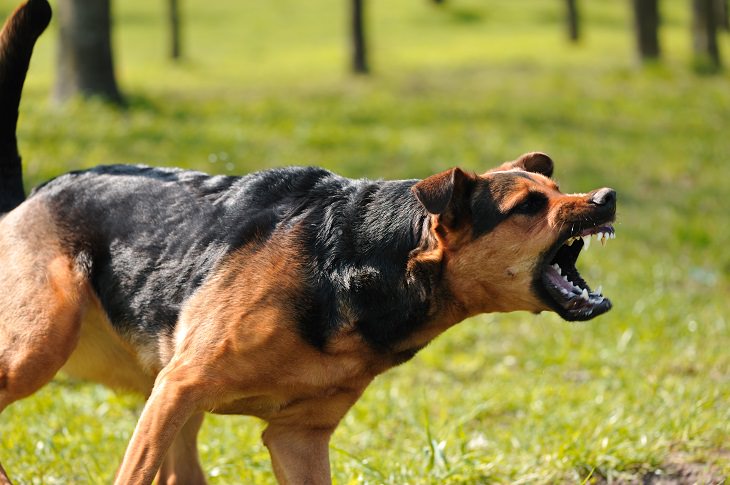
Stress is a natural part of life, be it in humans or dogs. In fact, stress is a lot more common in dogs than you’d think, and it can be caused by a variety of factors. Among the most common are trauma, a change in environment, confinement, change of routine, boredom, noise, separation, and unwanted interactions with overly-aggressive people or other dogs.
As you know how stress can make you feel and affect your mental and physical health, you will certainly want to reduce your little friend’s stress levels as well. Dogs communicate their emotional state, including stress, through body language and behavior. By knowing these signs, you can help alleviate your dog’s stress and help him feel at ease.
Below are the top 10 signs of stress and anxiety in dogs:

If you’re accustomed to your dog’s sleeping patterns, you might notice that your pet sleeps more when feeling stressed.
When experiencing stress, the body enters a fight-or-flight mode and causes the adrenal cortex to release stress hormones that put the body on high alert. The point is to energize the body, but eventually the body becomes fatigued, and you or your pet ends up sleeping more.
You should always consult your vet if you realize that your dog is sleeping more than usual or seems overly lethargic.
2. Shaking or Shivering
It’s common for a dog to shiver playfully, but involuntary shaking or shivering might be a sign of something other than excitement and can indicate stress. To add to this, your furry friend might hide, or display signs of aggression as well.
If your dog is not wet or cold, in pain or ill, and he is shaking, try to calm him and make him feel that the environment is safe.

A bit of shedding is normal, but if it’s excessive, this could be a sign of stress as well as some type of skin problem. The loss of hair occurs due to the effects of the stress hormones that are released into the bloodstream.
It’s common to notice increased shedding while visiting a new dog park or veterinary clinic, as your pet becomes overly anxious.
4. Pinned-Back Ears
The position of your pet’s ears can tell you whether they are feeling stressed or not.
Ears that are pinned back tightly against the head are a clear indicator that your dog is having feelings of uneasiness. However, each breed of dog has different types of ears, so you need to pay regular attention to their ear positioning so you know when something might be up. It may be hard to recognize this sign in dogs with floppy ears, but you can still look closely at the base of the ears for movement.
5. Isolation
Just like you might prefer to be left alone when you’re stressed, the same can happen with your pet. Many breeds of dogs are known to prefer some alone time when suffering from stress.
If your dog is usually friendly and suddenly starts isolating himself from people or other pets, it’s likely a sign of anxiety or stress. A stressed dog will frequently display avoidance behaviors by hiding behind furniture and turning away from their owners.

It’s normal for dogs to bark for various reasons, but excessive whining or barking, whether inside or outside, can be a sign of stress or anxiety.
Excessive barking due to stress is often caused by confinement, frustration, separation, or lack of exercise. If you think your dog’s excessive barking or whining is due to stress, contact your vet.
7. Panting for No Reason
If your dog is panting for no apparent reason, possibly with his ears pinned back and low, then it’s indicative of a high stress level.
Panting can also be due to chronic illnesses, heat stroke, poisoning, or other problems, so you should take your dog to the vet if it’s experiencing excessive panting.
8. Tucked Tail
A tucked tail can indicate a range of emotions in dogs, including stress, anxiety, fear, and aggression. In fact, a tucked tail is a classic fear signal and should never be ignored. A dog that’s afraid may bite out of fear.
Furthermore, a tail held straight down or simply wagging at the tip can be indicative of stress.

When stressed, a dog can lose his normally healthy appetite or become picky about his food. They will usually avoid eating normally again until they feel secure or at ease.
If your pet suddenly loses interest in food, it’s important to consult your vet.
10. Digestive Problems
Digestive issues in pets are most commonly attributed to disease or food intolerance, but problems such as constipation and diarrhea can be triggered by anxiety or stress.
When stressed, your pet’s body releases an excessive amount of norepinephrine, the fight-or-flight hormone. This hormone can alter gut bacteria and interfere with gastrointestinal tract motility, which in turn causes issues such as constipation and diarrhea.
Other Signs of Stress
• Excessive sniffing
• Excessive drooling
• Dilated pupils
• Rapid eye blinking
• Scratching at walls and floors
• Coughing
• Sneezing
• Avoiding eye contact
Tips to Reduce Stress in Dogs
• Identify your dog’s stress triggers and avoid them when possible.
• Stick to your dog’s regular routine.
• Spend more time with your dog.
• Don’t get angry at your dog when he’s stressed.
• Choose a high-quality dog food. A healthy, well-balanced diet can reduce the risk of anxiety and stress in dogs.
• Leave a piece of clothing with your scent on it whenever you go out.
Source: top10homeremedies
Images: depositphotos